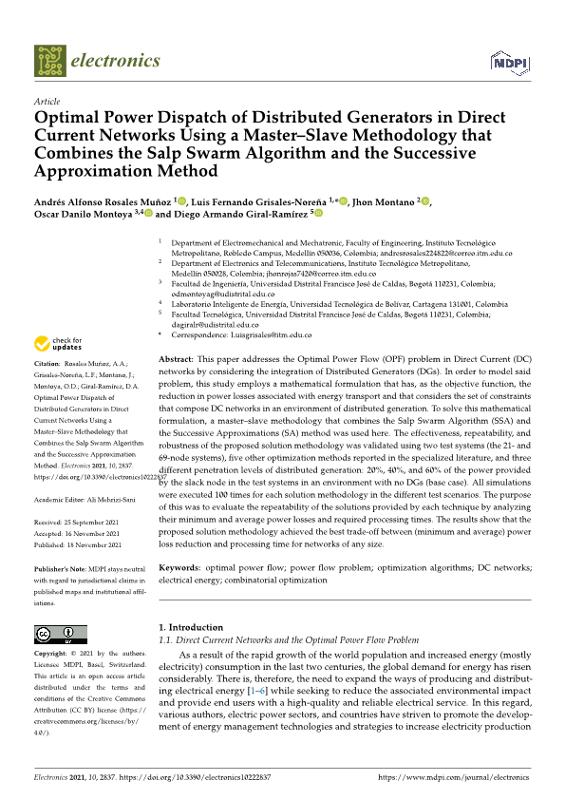Abstract
This paper addresses the Optimal Power Flow (OPF) problem in Direct Current (DC) networks by considering the integration of Distributed Generators (DGs). In order to model said problem, this study employs a mathematical formulation that has, as the objective function, the reduction in power losses associated with energy transport and that considers the set of constraints that compose DC networks in an environment of distributed generation. To solve this mathematical formulation, a master–slave methodology that combines the Salp Swarm Algorithm (SSA) and the Successive Approximations (SA) method was used here. The effectiveness, repeatability, and robustness of the proposed solution methodology was validated using two test systems (the 21- and 69-node systems), five other optimization methods reported in the specialized literature, and three different penetration levels of distributed generation: 20%, 40%, and 60% of the power provided by the slack node in the test systems in an environment with no DGs (base case). All simulations
were executed 100 times for each solution methodology in the different test scenarios. The purpose
of this was to evaluate the repeatability of the solutions provided by each technique by analyzing
their minimum and average power losses and required processing times. The results show that the
proposed solution methodology achieved the best trade-off between (minimum and average) power
loss reduction and processing time for networks of any size.














